Commitment to Digital Wellbeing Excellence
Students deserve to thrive in the digital age.
ACTIVATE, EQUIP,
and CERTIFY
Digital Wellbeing Educators and Youth Leaders at your school
and in your community
Our training and certification process educates, inspires, uplifts, and creates community, connection, and conversation. We train secondary school educators and youth leaders to partner with students to support a shift toward Digital Wellbeing practices and promotion.



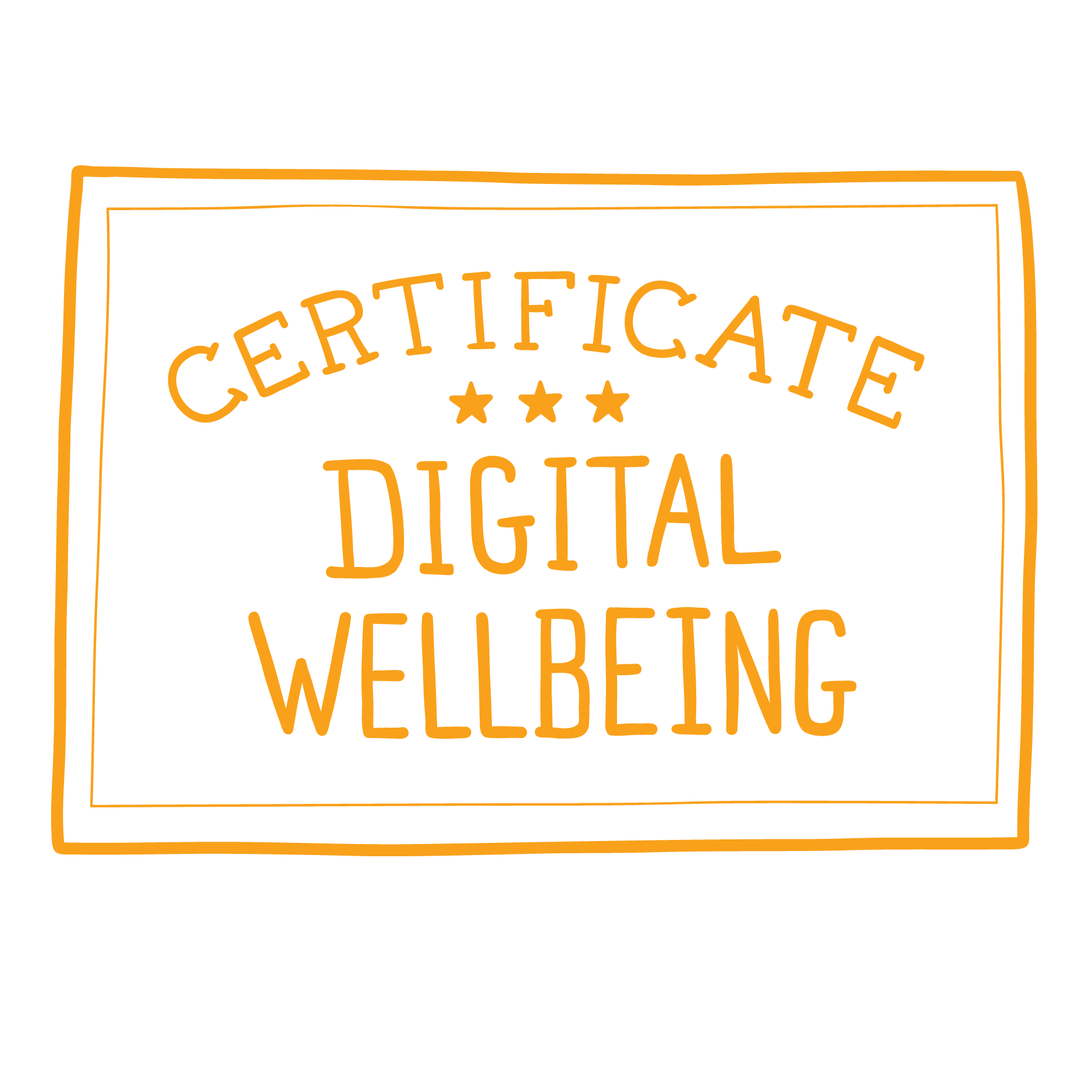

FACILITATOR TRAINING and
YOUTH ENGAGEMENT
The “Why” for Digital Wellbeing, along with practical tools for creating brave group conversations for young
people to reflect on their device use—reducing isolation and building connections and community.
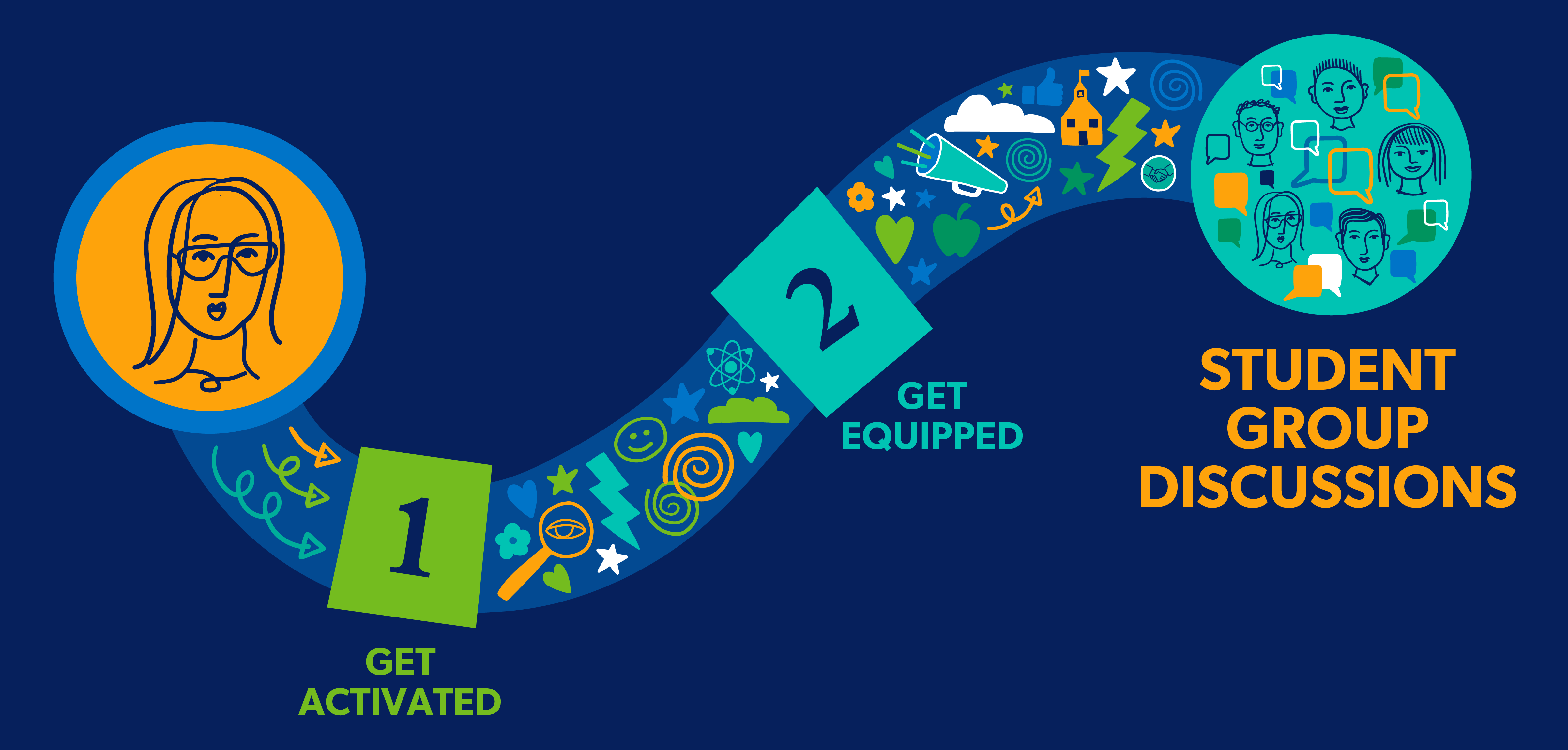
EDUCATOR and
YOUTH LEADER CERTIFICATION
A Digital Wellbeing Certified Educator is certified through training, resources,
and practicum for holding intentional and meaningful Group Conversations,
creating a world where young people can thrive.
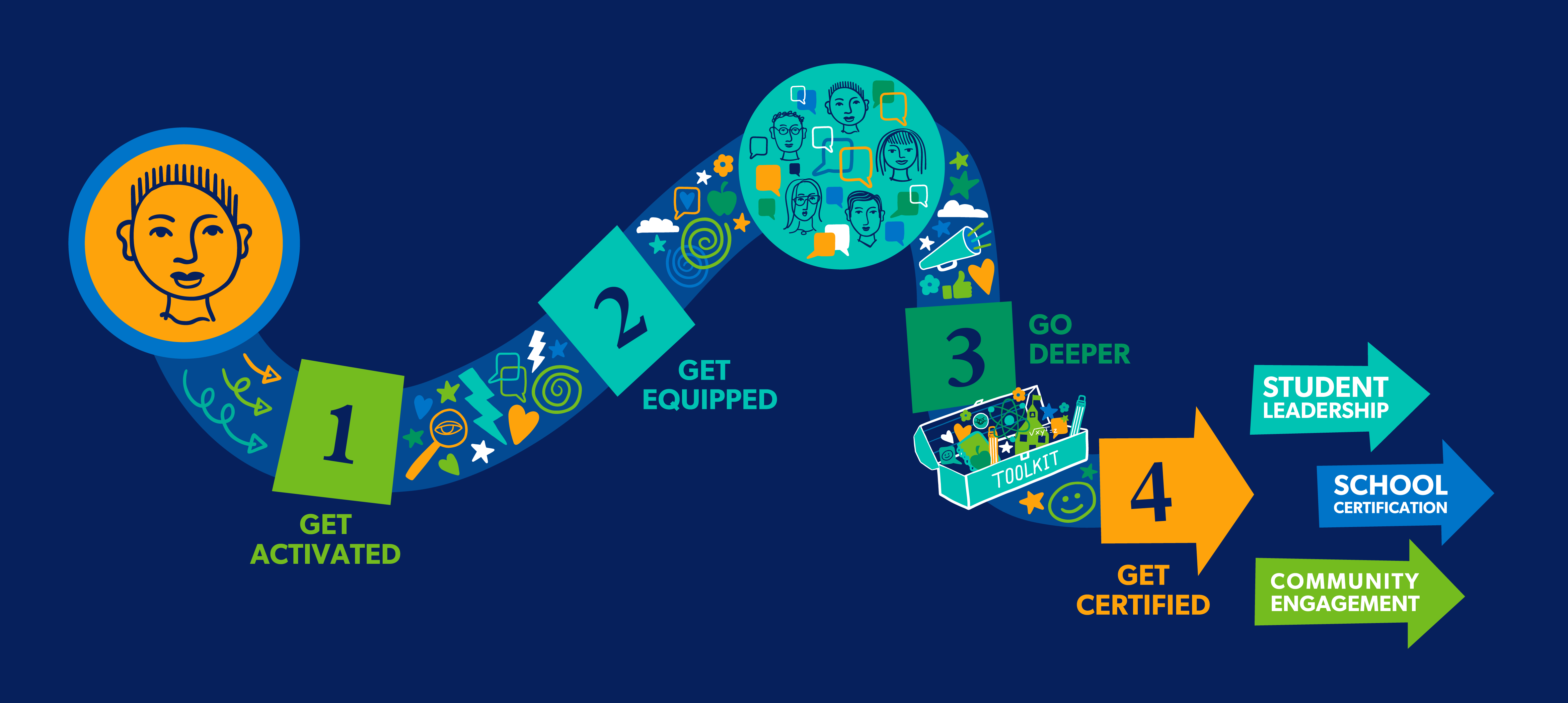
At a Glance:
Our Training & Certification
 Step 1: GET ACTIVATED
Step 1: GET ACTIVATED
Digital Wellbeing Introduction
Your primer for shifting toward Digital Wellbeing.
What’s Included:
Digital Wellbeing Activation Module
Research, data, Youth Voice, and practice of Digital Wellbeing
Course Objectives:
• Learn about technology use and its impact on student learning and wellbeing based on the research
• Understand the voices of young people and gain empathy about their experiences with digital media
• Gain strategies to begin a shift toward a Digital Wellbeing culture
• Reflect on one’s learning and experience
 Step 2: GET EQUIPPED
Step 2: GET EQUIPPED
Facilitated Discussion Training
Start having deeper conversations with young people today.
What’s Included:
Facilitated Discussion Instruction Module
Necessary theory, skills, and practice
Course Objectives:
• Understand the theory behind Facilitated Discussion
• Gain Facilitated Discussion skills
• Apply the skills of Facilitated Discussion with students
• Learn Digital Wellbeing skill-based solutions and practices that you and your students can use
• Reflect on one’s learning and experience
• Gain knowledge and skills for holding a brave, non-judgmental, and inclusive space for conversations
• Provide opportunity for young people to reflect on their device use
• Build empathy for young people
NOTE: Direct access to a group of young people is required for GO DEEPER and GET CERTIFIED.
 Step 3: GO DEEPER
Step 3: GO DEEPER
Facilitated Discussion Toolkit
Create deeper thinking through ongoing conversations to promote sustained changes and Digital Wellbeing practices.
What’s Included:
Facilitator & Peer Educator Toolkit
A series of activities to support Digital Wellbeing, including Student Leadership Activities (created for and with young people)
Implementation Coaching
LiveMore ScreenLess staff will provide an overview and guidance for successful implementation of the toolkit
Course Objectives:
Increase awareness and knowledge about…
• technology and wellbeing research
• the 5 Dimensions of Digital Wellbeing
• Persuasive Design, the Attention Economy, and Big Tech’s business model
• tools and resources to further elevate Digital Wellbeing within community
Build motivation and confidence to…
• elevate one’s Digital Wellbeing
• engage and go deeper with young people in Digital Wellbeing conversations
 Step 4: GET CERTIFIED
Step 4: GET CERTIFIED
Facilitated Discussion Practicum
Partner with young people to lead and to bring Digital Wellbeing into schools and community.
What’s Included:
Certification Process
Training application, reflection, and evaluation
Guidance from Digital Wellbeing experts
Annual recertification available
Virtual Coaching Meetings
Reflect and process learnings
Apply and practice Facilitated Discussions and Student Leadership Activities
Course Objectives:
Equip facilitators with Digital Wellbeing skills and practices that…
• support the 5 Dimensions of Digital Wellbeing
• increase agency to implement “Go Deeper” conversations
• elevate the distinction of being a Certified Facilitator to further the capacity to shift toward Digital Wellbeing in schools and communities
• increase the ability to sustain Digital Wellbeing Facilitated Discussions and practices
What You’ll Get with
Our Certification
- Certified Digital Wellbeing Facilitator Badge
- Access to our Digital Wellbeing Facilitator Toolkit
- Direct coaching support from LiveMore ScreenLess
- CEUs commensurate with depth of training
- The initial steps for Student Leaders Digital Wellbeing Certification
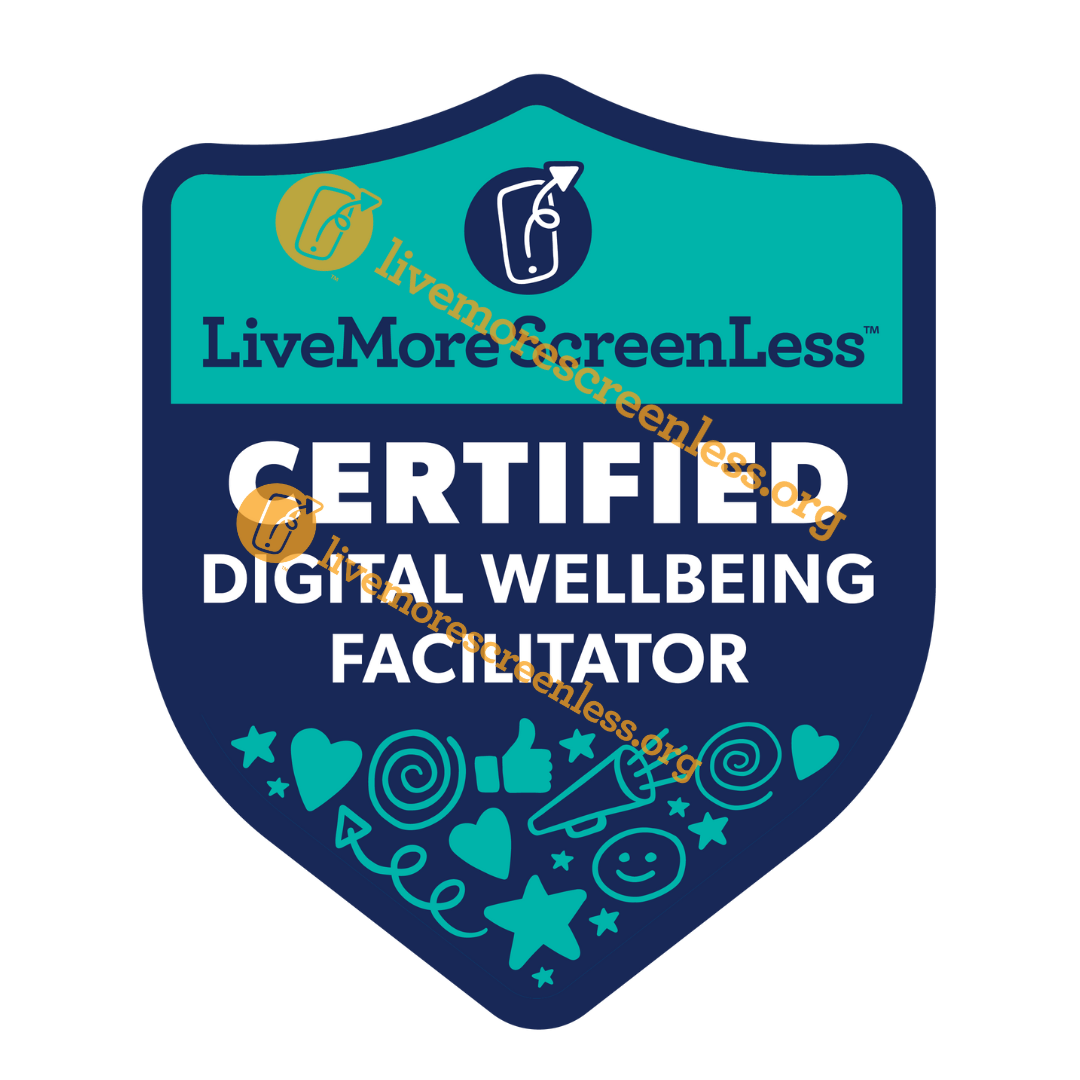
Training Options
We have three levels of depth for you to consider for Digital Wellbeing Training.

Digital Wellbeing Certification
Step 1, Step 2, Step 3, and Step 4
Total Cost: $999
Estimated time: 15–20 hours

Get Activated and Equipped
Step 1 and Step 2
Total Cost: $299
Estimated time: 2 hours
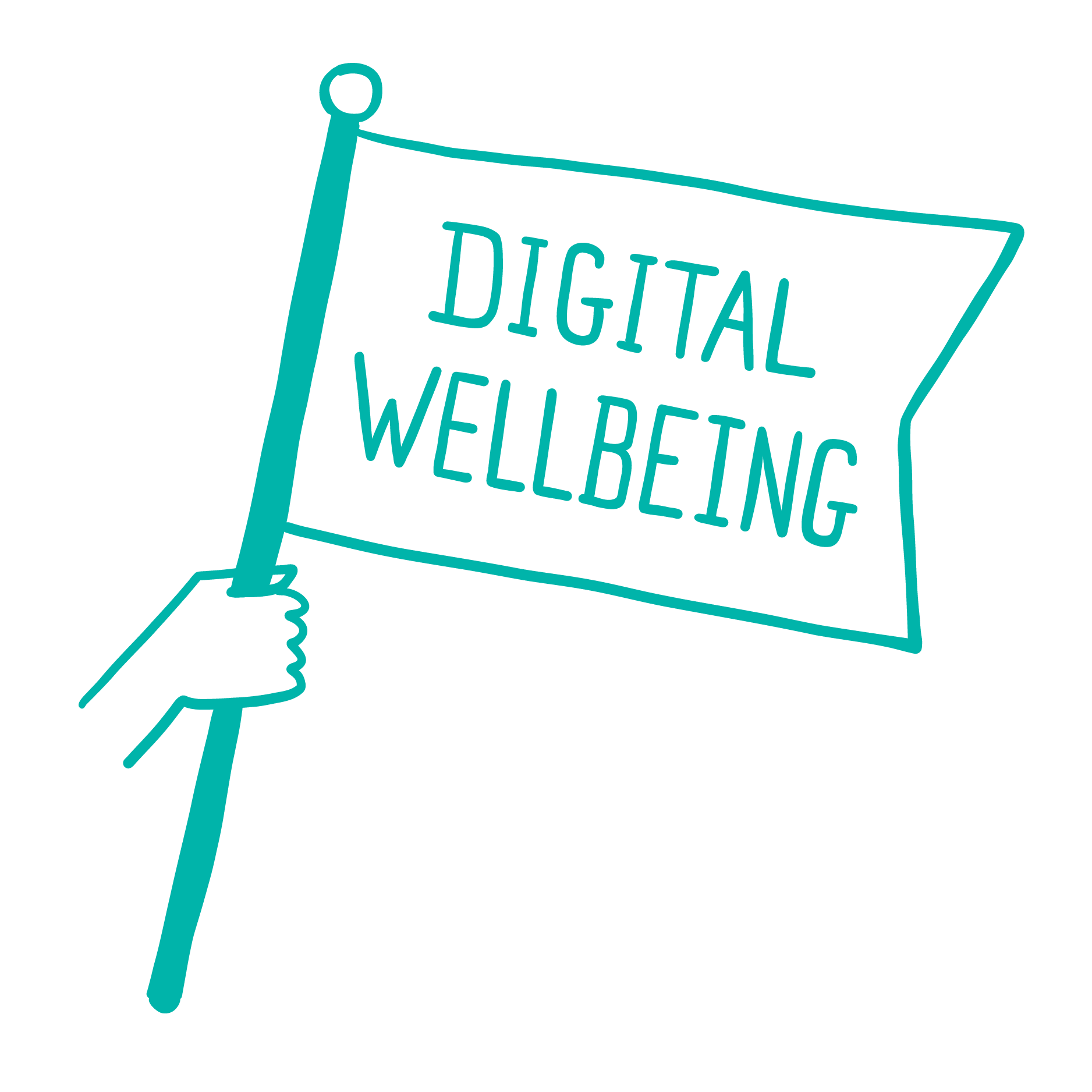
Get Activated
Step 1
Total Cost: $99
Estimated time: 1 hour
Please inquire to learn more about Group Rates and
our In-Person Professional Development and Trainings.
Expert Instruction
Educator-tested curriculum built on combined 50+ years of experience in teaching, counseling, and health promotion; and 20 years of professional development facilitation.
Get Certified
Begin a shift toward Digital Wellbeing practices for your college community with expert guidance and support while earning a certification and recognition.
Ongoing Support
Deepen your learning and practice through our Digital Wellbeing Community Cohort virtual meetings and ongoing personal coaching during and after certification.
Innovative activities and certification providing personal, professional, and leadership growth and opportunities
The implementation of Digital Wellbeing Facilitated Discussions
and toolkit activities are proven to:
-
- Cultivate a sense of community
- Reduce isolation
- Enhance Digital Wellbeing skill building and practices
- Foster healing for those who feel alone in their struggle with device use
- Improve Digital Wellbeing across Five Dimensions
- Raise awareness about research that supports
the urgency to attend to Digital Wellbeing - Support a shift toward Digital Wellbeing
Frequently Asked Questions
We understand the myriad advantages of technology, and promote balanced, intentional, and effective use of technology. We are not anti-tech.
From our conversations with educators and young people, we know their pain points and feel the urgency to act NOW. The effects of screen overuse and misuse is having real life negative consequences on our young people. You can act on this urgency through the LiveMore ScreenLess Digital Wellbeing Certification to support student mental health and learning!
By cultivating spaces where young people can feel seen, heard and valued by sharing their experiences and thoughts around Digital Media. Where the facilitator is “walking alongside” sharing “power with” participants. In creating this Digital Wellbeing Facilitated Discussion space, participants recognize they are not alone in their struggles with digital media and feel connected to others and forces larger than themselves.
“I liked the Conversation Circle. I learned the way I feel about phones is shared by a lot of people.”
— Student
For those who want students to thrive in the digital age while in middle or high school and beyond! The training is designed for student leaders and secondary school educators who are committed to their student’s personal and academic success.
- Educators
- School Administrators
- Mental Health Counselors
- Social Workers
- Nurses
- Coaches
- Media Specialists
- Student Support Staff
- Trainers for School Staff
- Health Educators / Public Health Professionals
- Community Organizations
Our Certification educates and equips YOU to support the mental wellbeing and academic success of your students.
Once you sign up for Certification, you get the following:
- Access to two, one-hour flexible and interactive online learning modules that you can work through independently
- Up to three hours of personalized coaching as you implement the learnings and practices with young people
- A Certification credential and Continuing Education Units
There are three steps to the Certification process:
- Completing Online Module #1: Digital Wellbeing Activation
In Step One, you will spend up to one hour enrolled in the Introduction to Digital Wellbeing online module (you select version Higher Education or Secondary Education version). You will:
-
- Learn about technology use and its impact on student learning/wellbeing based on the research;
- Hear the voices of young people from data collected by LiveMore ScreenLess
- Learn Digital Wellbeing skill-based solutions and practices that you and your students can use
- Participate in individual reflection
- Completing Online Module #2: Equip – Facilitated Discussion Training and Application
In Step Two, you will spend up to three hours in the Facilitated Discussion interactive online module and apply your learnings to facilitate with your students. You will:- Learn the theory behind the facilitated discussion
- Gain the skills necessary to lead facilitated discussions with your students
- Apply the skills of facilitated discussion with students
- Participate in reflection
- Implementation of Deeper, sustained conversations with Digital Wellbeing Activities and Facilitated Discussions
In Step Three, you will spend 10-20 hours applying the learning through Digital Wellbeing educational activities and facilitated discussion. You will:
-
- Receive an individual 1 hour virtual coaching session and receive access to LiveMore ScreenLess’s Facilitator Toolkit based on the five dimensions of wellbeing – mental, cognitive, social, physical, and emotional wellbeing. The Toolkit
- includes over 40 pages with over 15 interactive activities and resources you can implement with your students at your fingertips
- features the voices of young people so that the information is relatable to your students, so they have the opportunity to respond to other young people’s experience with technology
- offers student leadership activities so that your students can lead Digital Wellbeing for themself and for others.
- With the toolkit at your fingertips and support from LiveMore ScreenLess experts you will apply the training through implementation of activities and facilitated discussions. In addition, you will
- Reflect and complete a two page reflection and evaluation of the training
- Receive up to two additional one hour individual coaching sessions from LiveMore ScreenLess experts so you can continue to practice and apply what you have learned in the Digital Wellbeing Certification
- Submit a photo and quotes to our online Community Corner
- $100 annual renewal to receive upgraded, revised toolkit access
- Receive an individual 1 hour virtual coaching session and receive access to LiveMore ScreenLess’s Facilitator Toolkit based on the five dimensions of wellbeing – mental, cognitive, social, physical, and emotional wellbeing. The Toolkit
With your $850 certification, you are licensed to use the Facilitator Toolkit directly with your students. However, only those seeking certification are licensed to duplicate materials from the Facilitator Toolkit.
The LiveMore ScreenLess team brings together our collective experience working in Public Health, Higher Education, and Secondary Education with a deep passion and care for the wellbeing of young people and those who work with them. In our roles as English teacher, teacher trainer, school counselor, program evaluator and public health educator, we have witnessed first hand the mental health crisis for our young people. We have been laser-focused on the interplay of young peoples’ decreased wellbeing and the rise of living immersed in technology. We bring research to practice with these solutions.
From listening to young people, we’ve heard time and time again that the traditional model of teaching digital citizenship that’s top-down and focused on telling young people what to do and what not to do isn’t sufficient. We adults didn’t grow up with smartphones and we aren’t seen as credible sources of information to be the external guide. Accordingly, our training takes the approach of equipping young people with data and experiences of other young people to have them make connections, experience conversations and build community to come to an understanding of what’s required to build and sustain Digital Wellbeing.
Our evidence-based approach includes strengths-based, positive-youth development, Peer Education (young people equipped to be in community and conversation with other young people to influence positive social norms and behavior change), and health equity. We are deeply informed by the Whole School, Whole Community, Whole Child Model(WSCC), which takes a student-centered, ecological, and holistic approach in the development of a young person and the need to engage students and the whole community as active participants in student learning and health. We all have a role to play and something to offer in the Digital Wellbeing of young people.
We measure effectiveness of the training through post-evaluation surveys that assess changes in knowledge, attitude and motivation, as well course satisfaction.
“Digital Wellbeing allows me to recognize the influence of technology on my mental, physical, and emotional health.”
— Sylvia
“Digital Wellbeing allows us to navigate technology, to decrease the negatives and increase the positives of digital media.”
— Eleanor
“Digital Wellbeing means taking time to recognize the areas that technology causes harm in my life and taking action to resolve those problems and create tangible solutions.”
— Zarion
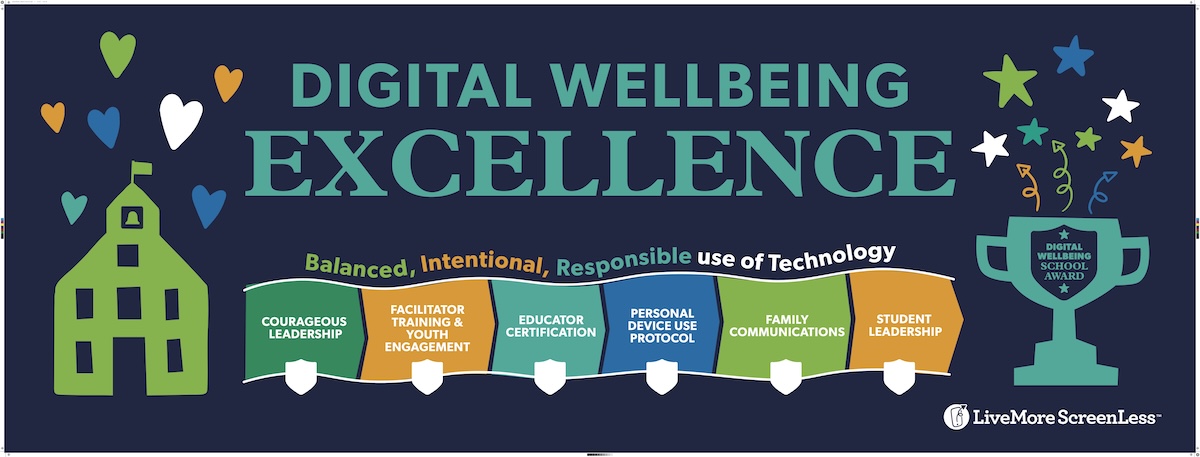
A Whole School, Whole Community Fully Integrated Device Use Practice, Procedures, and Policy Recommendation
The intention of this document is to outline considerations for school leaders in creating a fully integrated Device Use policy that includes the practical application and the procedures that support the purposeful, consistent, and effective implementation of the policy.
In brief, LiveMore ScreenLess’s recommendations for a school device use policy shift include:
- ● ensuring the rationale for the policy is supported by research and data, and the concept of persuasive design of technology to hold one’s attention is defined/explained
- ● educating staff, students, and parents (the whole community) with the WHY
- ● holding facilitated discussions with students so they feel heard and isolation is removed
- ● activating students through facilitated discussion so they can lead Digital Wellbeing behaviors, practices, and discussions – supported by a trusted educator
- ● grounding the practice, procedures, and policy out of concern for the wellbeing and learning of students
- ● centering the policy on the goals of education
- ● removing teachers as enforcers
- ● using wellbeing language in the policy
- ● showcasing positive social norms communication to uplift positive behavior of students
- ● engaging in a whole community approach
- ● defining device use to include smartphones, smartwatches, and earbuds
- ● creating a school-wide definition of Digital Wellbeing
Let’s work together!
WHY DIGITAL WELLBEING TRAINING?
U.S. Surgeon General Dr. Vivek Murthy recently declared a new public health epidemic in America: loneliness.
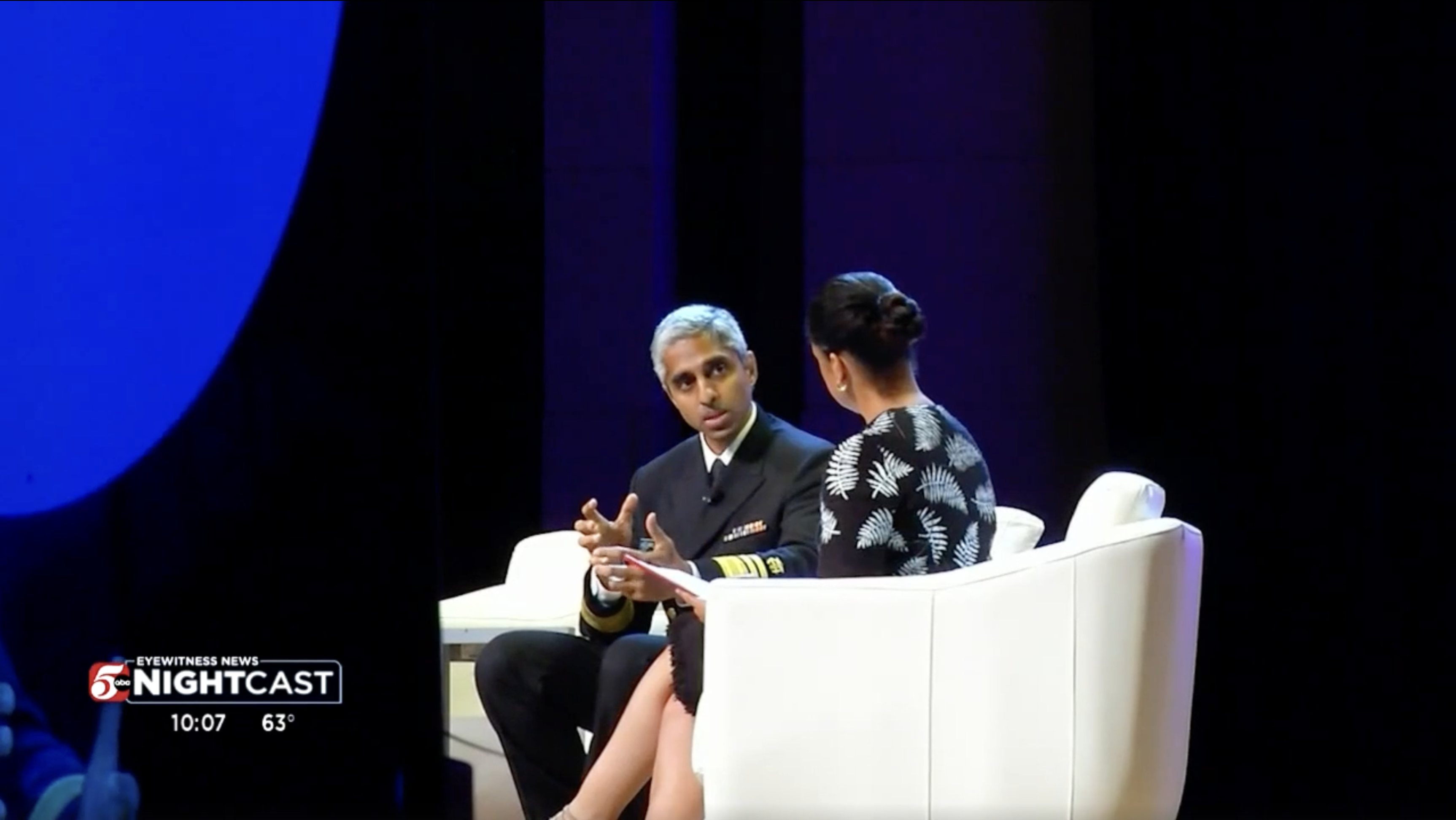
LiveMore ScreenLess is building communities that are healthier, more resilient, less lonely, and more connected. Our Digital Wellbeing Certification educates and equips you to combat loneliness and isolation by building connections, conversation, and community.
Our approach aligns with Dr. Murthy’s three recommendations:
- Deepening our knowledge to understand causes and consequences of social disconnection and the effectiveness of efforts to boost connection
- Creating meaningful and healing connection with others
- Cultivating a culture of connection




Device use is paradoxical.
We need trained educators to open discussions
that acknowledge the benefits and process the drawbacks.



Let’s raise the bar.
In June 2022, Richard Calutta, CEO of ISTE, gave an inspirational keynote address to the National Conference calling for school leaders and educators to raise the bar in addressing online safety and to shift toward Digital Wellbeing.
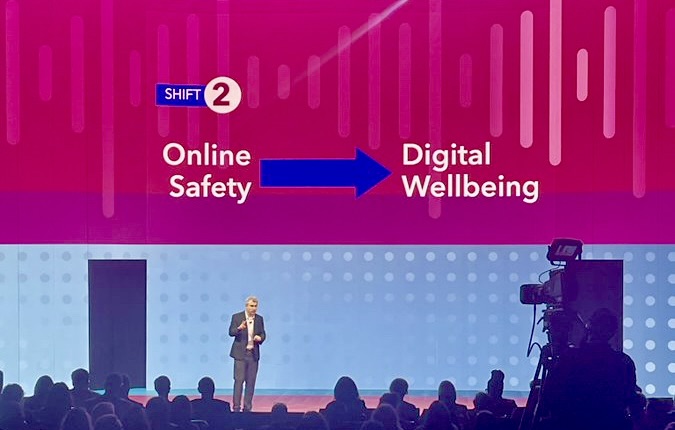

Expanding Digital Citizenship toward Digital Wellbeing

Digital Citizenship
Digital Citizenship lessons created and delivered by adults in individual classes for young people to be prepared for success in a connected world by taking ownership of their digital lives. The lessons can be perceived by students as outside of their experience, disconnected from their lives, heavy on rules of what not to do, and due to repetition, redundant.

Digital Wellbeing
Our Digital Wellbeing Whole Community approach is research-based and informed by young people and educators. The goal is to partner with and equip young people and educators to facilitate discussions, to listen, and to share community building activities within an environment that supports a culture shift toward balanced, intentional, and effective use of technology.
Educator Testimonials from
Get Activated: Fall 2023 – Spring 2024
100% indicated they are more knowledgeable about the research on the harmful effects of screen use on adolescent wellbeing and learning.
95% would recommend this training to a colleague.
95% indicated they are more empathetic towards young people as they manage their devices.

“All school staff need to be well versed in understanding the challenges devices present.”

“This course balances research with listening to the perspective of students and teachers. It’s helpful to hear what students think and to get ideas from other school staff about how to improve digital wellbeing in our communities.”

“This training is really high quality.”
High School Student Exit Ticket Results–
the Get Equipped training in action– Fall 2023
94% – would recommend facilitated discussion experience to their peers.
88% – said the discussion was valuable to their wellbeing.

It opened my eyes to how addicting my phone is.
— Student

A lot of people have the same experience of scrolling too much and feeling bad about it.
— Student

Relating to a lot of my classmates made me want to spend less time on my phone.
— Student
One Hour Workshop “Digital Wellbeing 101”
Building Community, Conversation and Connection: A Pathway To Digital Wellbeing
March 21, 2024 – School Health Conference in Mankato and Rochester
★ 97% of participants would recommend the workshop to a colleague
Key-aways for participants (school nurses, social workers and school counselors):

“That there is no wellbeing without Digital Wellbeing. The necessity to bridge wellbeing and technology.”

”Balanced, intentional and responsible use of technology should be in every school.”

“Digital Wellbeing should be a focus and something we are having conversations about at our schools.”

“We can make a difference in the lives of others.”

“The kids are trying to navigate it all and compassion is needed!”

“Great organization that can train and provide resources on identifying impact of social media. Great resources to help our students.”
TESTIMONIALS

LiveMore ScreenLess’s approach really resonated. Students need a new approach for digital literacy.
— Media Specialist

This is the best PD I have ever been a part of.
— Veteran Educator

Staff have been very concerned about student wellbeing. Facilitated Discussions give us a lens we can use to start where they are and to listen.
— Educator

LiveMore ScreenLess staff are great listeners. They know people need to be part of the crafting of the solution.
— Educator

We’re all struggling using technology. What I like is that LiveMore ScreenLess is using awareness and education. A knife can be used to cut an apple or to harm someone. Technology is the same—it can be overused or a tool. It’s all about how it is used.
— Educator

Peer Education is the solution because students relate to their peers and understand where they are coming from because they are experiencing similar situations.
— Educator
What students have to say…

Everyone shared their experiences, which is kind of vulnerable, but the only way for change. It was nice to see other people were going through the same thing.
— Student

It was honestly so relieving to know that some people have the same experiences and that some people struggle with the same thing.
— Student

I know how to better connect with my peers and that I don’t need my phone to make that connection.
— Student

Starting a conversation can sometimes be all you need to understand Digital Wellbeing and how important it is for your life and overall wellbeing.
— College Student,
Digital Wellbeing Discussion Facilitator

I learned how to find exactly how I’m feeling and find ways to make myself feel better without my phone.
— Student

I’m now putting more thought into my phone usage and how I can apply better habits to my life.
— Student
What other professionals have to say…

This training is something that really affirmed for me that the traditional model of ‘teaching’ digital citizenship is not effective. Facilitated Discussion provides a better way.
— Mental Health Professional

I talk about LiveMore ScreenLess all the time. I say, ‘If you want to do Digital Wellbeing, this is the way to do it.’ Their partnership really helps me.
— Staff

LiveMore ScreenLess’s approach is multi-faceted so change can happen at all levels.
— Staff

LiveMore ScreenLess is out in front of what is happening. I think they are ahead of their time and that is very hard to do when working with young people.
— Staff

How do schools fund
DIGITAL WELLBEING?


Districts and schools use a variety of funding sources to support Digital Wellbeing.
Here is a selection of diverse funding considerations.
Title Funds
Title Funds can be a primary source of funding for Digital Wellbeing under ESSA.
Title IVA
Title IV A of the Every Student Succeeds Act (ESSA) is a source of Digital Wellbeing funding to support the mental health and wellbeing of your students as defined by the Student Support and Academic Enrichment (SSAE). These funds can be used on educational workshops, professional development, student leadership development, and school and community resources that support all three tiers of the Title IVA grant and effective use of technology.
Learn more about Title IVA funding from the Minnesota Department of Education.
District Funds
District General and Professional Development budgets can be used to fund Digital Wellbeing education and services.
Federal and State Initiatives
The United States Department of Education offers many competitive initiatives throughout the year. The U.S. Department of Education’s Forecast of Funding Opportunities is an important resource.
Each state has resources for education initiatives at all levels K–16. U.S. Department of Education’s Minnesota Contacts identifies links to state education agencies.
Learning & Leadership Grants
When District Funds are limited, grant funding from The NEA Foundation can be utilized for essential Professional Development opportunities.
PrairieCare Fund
PrairieCare Fund’s mission is to improve the health and wellbeing of our communities. We do this by supporting Minnesota schools and non-profits. Your support provides funds to equip schools with calm rooms, social & emotional learning curriculum, peer to peer mentoring training for students, and trauma training. Since 2016, PrairieCare Fund has granted over $1.4 Million to Minnesota schools and non-profits for their mental health needs. We have impacted thousands of youth and staff and saved countless lives.
Foundations and Corporations
Many foundations, corporations, and businesses support education efforts. Each community is unique and may have varying access to these funders.
Community Support
Advisors, district leaders, and certified Digital Wellbeing professionals can look to their local communities to generate resources to support student leadership efforts. Local support could be designated for bussing to elementary schools, field trips (like our Youth Summit), promotional posters, and other community-wide Digital Wellbeing events.
Another possible resource is www.DonorsChoose.org. A public school educator can post a specific project seeking support.
Frequently Asked Questions
Yes, we are a 501(c)(3) nonprofit organization.
If you’d like to support LiveMore ScreenLess’s mission, you may submit your tax-deductible donation here.
School District Education foundations are 501(c)(3) organizations. These foundations can accept money for their schools. An education foundation can designate the Digital Wellbeing program in the budget. A local PTA might also be an eligible 501(c)(3) grant recipient. Your district grant writer or higher education development office will have more community specific information.
LiveMore ScreenLess is a 501 (c) 3 Minnesota-based Nonprofit. Everything we do – from the products and services we offer to the advocacy we advance – follows our 4-stage framework of engagement, education, communication, and systems that is grounded in the Whole School, Whole Community, Whole Child Model (WSCC) developed in partnership with the CDC and ASCD.



